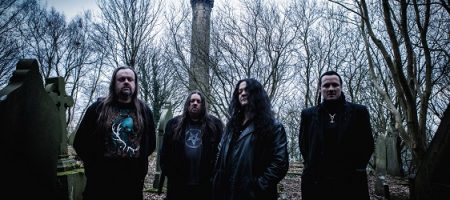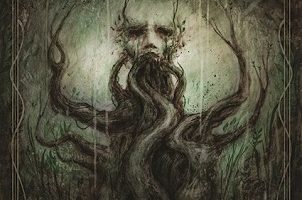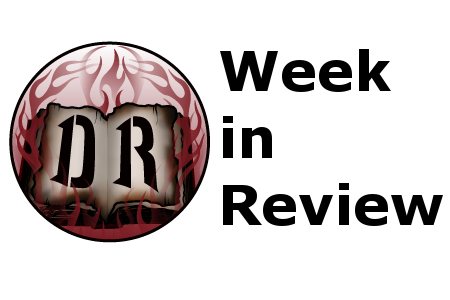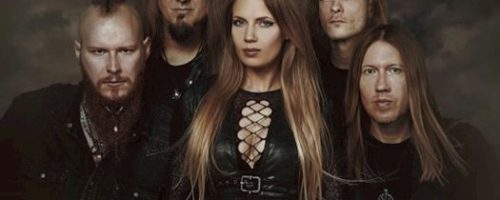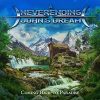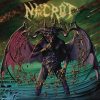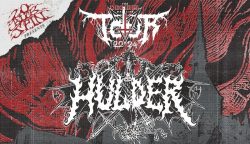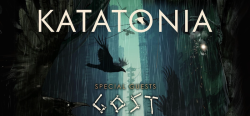Solstice – On Perpetual Bleak Paths
Wednesday, 23rd April 2014
“The current focus for almost everyone it seems, is rehashing and reliving past glories simply to boost finances or ego through the seemingly endless reunions or classic album tours. Not only is it sad and pathetic, it’s dangerous for the music when the focus shifts from the art of making great music, to the business of squeezing every last penny from the past.”
Solstice vocalist Paul Kearns has a point. The metal reunion trend (see: virtually every death metal band with an album to its name in the early 90s) has become a convenient way to make a fast buck and crank out an album. Sure, some have been more fertile than others (i.e. Carcass, Cynic, and hopefully At the Gates later this year), yet if every band gets back together eventually, the reunion allure becomes diminished.
Solstice got their classic doom wings in the 90s, having achieved minor, cult success with their excellent 1994 Lamentations debut, a body of work that honed in on the Candlemass/Sabbath spirit, with emotive clean vocals. However, the band was only able to spit out an additional album in the form of 1998’s New Dark Age, calling it a day in 2002, then reuniting in 2007. Getting on track to release the four-song EP Death’s Crown is Victory hasn’t been easy, as the band has endured a spate of personnel changes that is too long to list here. Therefore, a quick-buck maker Solstice’s prolonged reunion is not.
“That can only be one thing: the lineup,” quips Kearns. “But then again, that’s hardly a new issue for Solstice. I’ve seen it myself in my relatively short time in the band. James [Ashbey] is the third drummer since I have been on board. But he makes all the difference. The previous two drummers were both very good as ‘drummers’ using the term very generally, but they had no particular love for the kind of music we play, and certainly didn’t have a connection to our ‘scene’ as it were. There was no drive. For a band like us that works slowly as it is, this just meant that we moved at a snail’s pace with new music.”
Death’s Crown is Victory is the first new collection of songs from the band in over 15 years, with mainman/founding member/guitarist Rich Walker assembling a relatively unsung batch of musicians to establish yet another variance of the band. The commanding and epic flavor of the EP (which features two nine-minute bookends and two short instrumentals) suggests Solstice weren’t in need of much fine-tuning to get back on the ‘ole doom horse. In effect, the pair of “I Am the Hunter” and title track are hardly the throwback numbers they could have been; the band has pushed their sound forward, resisting temptation to play it like it was 1994…
“Solstice had been away for a long time already and I thought it was important to have something that represented the band today and the members today,” says Kearns. “After all, it was only Rich who was truly a part of the Solstice tapestry. I’ve already said that I believe bands that trade off their past glories are more or less pathetic, though our circumstances were a bit different, we were still heading that way. And I don’t think that any of us who were new to the band wanted to go on indefinitely trading off the work of other people.”
To that point, Solstice is often mentioned in the same breath as the Holy Trinity of British doom: Anathema, My Dying Bride, and Paradise Lost. Their origins are similar, each having grinded (or lurched) it out in the early 90s U.K. scene. The storyline involving the trio’s eventual drift – and drift back (minus Anathema) is a familiar one, but this is where comparisons should effectively end.
“You know Walker himself got sucked into the U.K. punk scene at a really, really young age and when he discovered bands like Pentagram, Saint Vitus, Candlemass etc.,” relays Kearns. “He had already been playing, promoting and writing about music for a few years. Whereas the other bands, I imagine, went through the progression most people – me included – would have made. Getting into rock first, then into metal for most folks via Maiden. And after a while getting into thrash metal, then death metal and after that maybe something a bit more left field like doom metal. Solstice came about from a different path to most of the bands that were in that scene with them at the time, and I think that played a big part.
“However, the single biggest difference was evident in the fact that Solstice began life as a band using clean vocals, as far as the likes of Anathema, My Dying Bride, Paradise Lost, etc., he continues. “They all came from some kind of a death metal base building their doomy sound on that platform, but each evolved into using clean vocals later. Solstice never had that element and sorta evolved through a much more pure doom platform as well as being more directly influenced by Maiden and the first few Priest albums. I think that’s key in how their sound always stayed different to most of their U.K. peers.”
Part of the recurring theme during our chat with Kearns, work on the follow-up to Death’s Crown is slow and steady. On deck is another mini-album, To Sol A Thane, of which Kearns has already prepared lyrics for, but has yet to hear music. Alas, it appears the wait will go on for a legitimate full-length.
“Bands rush the creative process all the time, at least I feel they do, and this is just so wrong,” he finishes. “Music should be an art form, a creative instinct that doesn’t adhere to a timetable, and when you betray these principles the results are just…plastic.”











